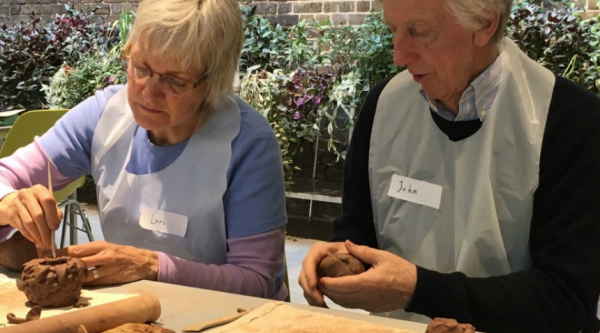Information
5 things to consider when designing websites for older people
Rik Williams talks about the guidelines we use to create accessible digital services, and what to consider when designing websites for older adults.
We wrote about our digital design guidelines for people affected by dementia. In this post, we will focus on the guidelines we use when designing for older adults specifically.
Why it's important to us
Dementia currently affects 900,000 people who are diagnosed. However, a dementia diagnosis also directly affects about 700,000 informal primary/family carers.
The average age of a family carer in the UK is between 60 and 65 years old. This is about 10 years older than the age where we typically begin to experience an acceleration in age-related physiological changes to our bodies.
Here we share the 5 things we consider when designing our digital services (including our website) for inclusion. These are important because poor website design and a lack of usability or accessibility affect older adults more often and more seriously than those who are younger.
1. Vision changes
As we get older it generally becomes harder to see things. This decline starts in our early twenties and accelerates after we enter our fifties

A visualisation of how our website might look for someone with weakened vision
These changes can present new challenges, such as seeing things clearly up close, perceiving colour differences, and difficulty processing visual information quickly.
We recommend:
- Make text legible, using plain backgrounds and fonts
- Make designs simple, free from distraction, clutter and unnecessary content
- Keep interfaces consistent with clear controls and labels
- Use colour sparingly, opting for colours with a higher contrast
2. Motor control
Getting older can also have an impact on coordination and the ways we're able to use our bodies. Like visual decline, this accelerates after the age of about fifty and can result in slower movements, as well as reduced stamina and dexterity.
These issues can also occur at all ages through injuries or different contexts of use.
We recommend:
- Maximise clickable areas, leaving big spaces between objects on the page
- Minimise the need for keyboard use
- Avoid timeouts, giving users time to complete their task
- Make it obvious when targets have been selected
3. Cognition
Our brain changes as we get older, with most functions reducing their effectiveness. These changes include changes to our memory, and our ability to ignore distractions, learn, and multitask.
We recommend making sure your website is:
- Bold - use strong words and verbs to label page elements
- Brief - use simple sentences, active language and get to the point
- Consistent - use consistent layouts, language and labels to build familiarity
- Helpful - provide useful cross-linking, chat features and offline support.
4. Knowledge gaps
Technological change continues at pace and this can mean that older adults are using technologies and terms which weren’t designed for them at the outset.
Typically this is expressed as a clash in their mental picture of how something is supposed to work. For example, what symbols in an interface mean, or how control gestures on a touch-screen device work.
We recommend:
- Organising and grouping content in a way that makes sense for readers
- Cutting out jargon, using language that is familiar to readers
- Labelling interactive elements clearly, using text and easy-to-recognise icons
- Making links and buttons explicit. Avoid saying things like 'click here'.
5. Attitudes toward technology
It’s important to remember that older people grew up with different technology than younger people. Likewise, when today’s younger people age then they too will experience this difference, although with the technologies of tomorrow.
This age-related difference can profoundly affect attitudes, feeling,s and opinions on technology. In particular, older adults may feel less comfortable using digital services. As a result, they may be less likely to adopt them and have reduced success in using them.
We recommend:
- Being flexible in how users can enter, save and view their data
- Earning users trust - mark ads clearly, avoid unnecessary logins or data capture
- Understanding the values of older people - never rush, patronize or blame your user
- Providing easy alternatives to get information e.g. a clear telephone number or email address.
Summary
Digital content, websites, services, and technology are increasingly important to stay engaged and connected in today’s world.
As the number of older people increases, particularly in developed countries like the UK, it becomes more important to design websites and other digital services inclusively so that it meets their needs.
Next steps
Let us know in the comments if you experience any issues using digital content and services - both those provided by Alzheimer’s Society, and in your daily life.



